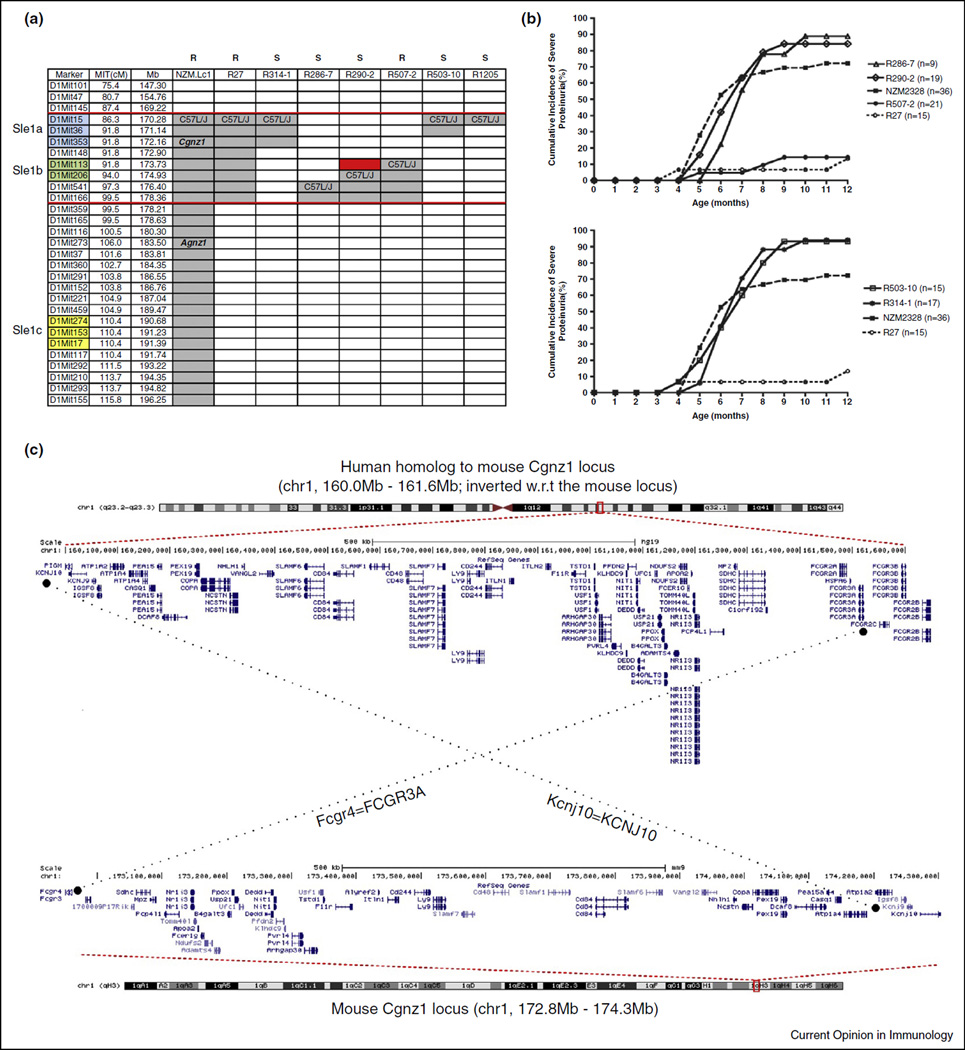Figure 2.
Fine mapping of Cgnz1 region on mouse chromosome 1 and the human homologous region. (a) Six intrachromosomal recombinant lines, R314-1,R286-7,R290-2, R507-2, R503-10 and R1205 were generated by generation of heterozygous mice from (R27×NZM2328)F1 × (R27×NZM2328)F1 and the heterozygous mice were bred to generate homozygous lines. R27 has a c1 segment covering both Sle1a and Sle1b from C57L/Jc1. 314-1 has the whole region of Sle1a from C57L/Jc1. R503-10 has only part of the Sle1a from C57L/Jc1. R286-7 lacks both Sle1a and Sle1b from C57L/Jc1. R290-2 contains part of the Sle1b from C57L/Jc1. R507-2 has the whole Sle1b region from C57L/Jc1. R1205 is a newly generated line with early mortality and it contains 2–19 genes depending on further delineation of the recombinant sites. The red rectangle depicts the region of 1.34 Mb where Cgnz1 locates. The gray areas denote the intervals in NZM2328 that are replaced with that of C57L/J (modified from [44••]). (b) Five intrachromosomal recombinant lines, R314-1, R286-7, R290-2, R507-2 and R503-10 were generated and a female cohort of these lines was followed for 12 months. All but R507-2 were susceptible to cGN. These results provide a genetic region located between microsatellite markers Mit148 and Mit206. This region is within the Sle1b region. The data show that the other two Sle1 subregions, that is, Sle1a and Sle1c, are not important for cGN. Female mice of R314-1, R286-7, R290-2, and R503-10 develop cGN in larger percentages in comparison with the parental line NZM2328. Almost 100% of R314-1 and R503-10 develop severe proteinuria by seven months of age (modified from [44••]). (c) The mouse Cgnz1 locus is nearly perfectly homologous to a 1.6 Mb locus on human chromosome 1. The assembled human locus is inverted with respect to the mouse locus; nonetheless the exact gene order is preserved. Dotted lines connect the human and mouse homologs at the boundaries of the mouse and human Cgnz1 loci.

